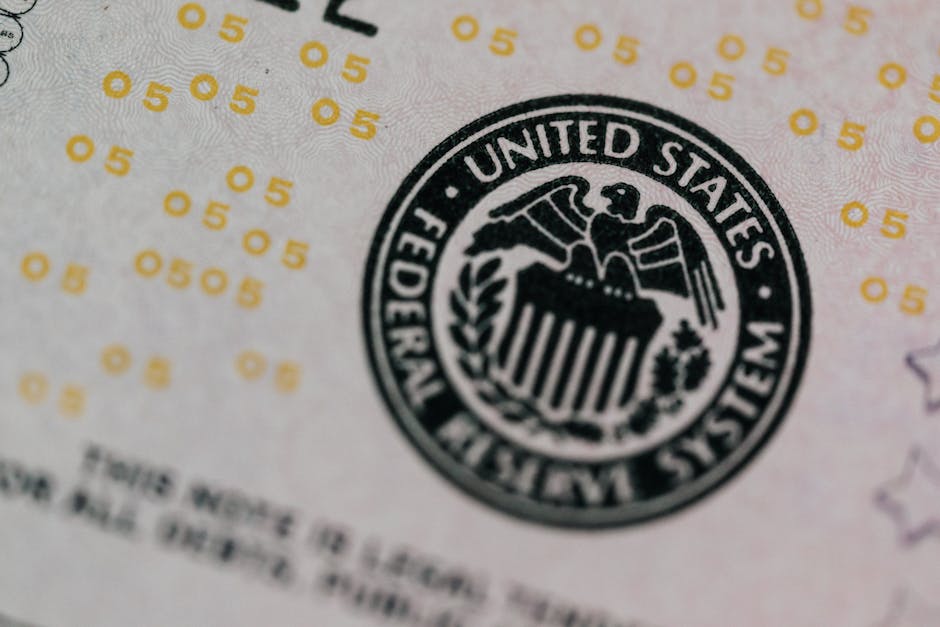Federal vs Private Student Loans: 8 Crucial Differences for Smarter Borrowing Choices in 2025
Navigating the world of student loans can feel overwhelming, especially when deciding between federal vs private student loans. With rising tuition costs and economic uncertainties in 2025, understanding these options is crucial for future graduates and current students alike. Federal loans, backed by the government, offer unique protections and flexibility, while private loans from banks or lenders provide alternative funding but come with varying terms. This guide breaks down the essential distinctions to help you borrow wisely and avoid common pitfalls.
Table of Contents
- Understanding Federal Student Loans
- Exploring Private Student Loans
- Interest Rates and Fees: A Core Comparison
- Repayment Options and Flexibility
- Forgiveness, Forbearance, and Protections
- Pros and Cons of Federal vs Private Student Loans
- How to Choose the Right Loan for You
- Final Thoughts on Federal vs Private Student Loans
Understanding Federal Student Loans
Federal student loans are funded by the U.S. Department of Education and represent the most common form of student financing. These loans are available through the Free Application for Federal Student Aid (FAFSA), which determines eligibility based on financial need, income, and other factors. In 2025, federal loans continue to be a cornerstone for millions of students due to their standardized terms and borrower-friendly features.
There are several types of federal loans, including Direct Subsidized Loans for undergraduates with demonstrated need, Direct Unsubsidized Loans available to both undergrads and grads, and PLUS Loans for parents or graduate students. Subsidized loans don’t accrue interest while you’re in school, making them particularly advantageous. Limits vary by year in school and dependency status, but they generally cap at around $5,500 to $20,500 annually.
One key appeal is the fixed interest rates set annually by Congress. For the 2024-2025 academic year, undergraduate rates hover around 6.53%, with graduate rates slightly higher. These rates apply uniformly, ensuring predictability. Federal loans also require no credit check for most types, broadening accessibility for those building credit histories.
Beyond funding, federal loans integrate with broader financial aid packages, including grants and work-study programs. This holistic approach helps minimize overall debt. As you weigh federal vs private student loans, remember that federal options prioritize accessibility over profit, aligning with public education goals.
Exploring Private Student Loans
Private student loans come from banks, credit unions, or online lenders like Sallie Mae or SoFi. Unlike federal loans, they aren’t government-backed and require a separate application process, often involving a credit check. In 2025, these loans fill gaps when federal aid falls short, especially for high-cost programs or international students ineligible for federal aid.
Eligibility hinges on credit score, income, and sometimes a cosigner. Lenders assess risk to set terms, leading to variable or fixed rates based on market conditions. Private loans can cover up to the full cost of attendance minus other aid, offering more borrowing power but at potentially higher costs.
Interest rates for private loans in 2025 range widely, from as low as 3.5% for excellent credit to over 15% for riskier profiles. Many include origination fees, which can add 1-5% to the loan amount upfront. While flexible in amounts, private loans lack the uniform structure of federal ones, requiring careful comparison shopping.
Private lenders may offer perks like career-specific loans or rewards for autopay, but these vary. For students comparing federal vs private student loans, private options suit those needing extra funds or with strong credit for better rates. However, they demand more due diligence to avoid unfavorable terms.

Interest Rates and Fees: A Core Comparison
Interest rates form a pivotal difference in federal vs private student loans. Federal loans feature fixed rates determined by federal law, providing stability amid economic fluctuations. For 2025, expect undergraduate Direct Loans at 6.53% and graduate at 8.08%, with no variability once locked in.
Private loans, conversely, offer fixed or variable rates tied to market indexes like LIBOR or SOFR. Borrowers with stellar credit might secure rates below federal ones, say 4-6%, but average applicants face higher costs. Variable rates can rise, increasing long-term expenses— a risk not present in federal loans.
Fees also diverge sharply. Federal loans charge a 1.057% origination fee for Direct Loans, deducted before disbursement. PLUS Loans incur 4.228%. Private loans often waive fees for top-tier borrowers but impose them otherwise, sometimes exceeding federal charges. Over a loan’s life, these can add thousands.
Consider a $20,000 loan: At 6.53% fixed federal rate over 10 years, you’d pay about $23,800 total. A private variable rate starting at 5% but rising to 7% could push costs to $25,000+. This comparison underscores why federal vs private student loans demand rate projections, especially in volatile 2025 markets.
To illustrate, tools from the Federal Student Aid website help simulate federal scenarios, while private lender calculators reveal personalized quotes. Always factor in your credit profile when evaluating these differences.
Repayment Options and Flexibility
Repayment flexibility sets federal vs private student loans apart dramatically. Federal loans offer multiple plans, including Standard (10 years), Extended (up to 25 years), and Income-Driven Repayment (IDR) plans like PAYE or SAVE, capping payments at 10-20% of discretionary income. For details on IDR, check our guide on mastering income-driven repayment plans.
IDR plans adjust based on earnings, potentially forgiving remaining balances after 20-25 years. This is invaluable for public service workers or low earners. Federal loans also allow deferment during school and grace periods post-graduation, with interest subsidies on some.
Private loans typically mandate fixed repayment schedules, often 5-20 years, with less customization. Some offer income-based options, but they’re rarer and less generous. Cosigner release after payments is possible, but defaulting risks immediate collection without federal buffers.
In 2025, with job markets shifting, federal flexibility shines. Private loans might accelerate payoff for high earners but burden others. Borrowers often mix both, using federal for basics and private for extras, but track total obligations to avoid overextension.
Switching plans is straightforward federally via loan servicers, while private refinancing requires new credit approval. This rigidity in private options highlights a key federal vs private student loans contrast for long-term planning.
Forgiveness, Forbearance, and Protections
Federal student loans excel in forgiveness and relief programs, a major edge over private ones. Programs like Public Service Loan Forgiveness (PSLF) erase debt after 120 qualifying payments in public or nonprofit roles. Teacher Loan Forgiveness offers up to $17,500 for educators in low-income schools.
Explore more in our article on student loan forgiveness programs 2025. Total and Permanent Disability discharge and Death Discharge provide automatic relief. In 2025, expanded IDR forgiveness under SAVE accelerates paths for many.
Forbearance and deferment pause payments during hardships like unemployment or economic downturns, with federal caps on usage. Private loans may offer similar but at lender discretion, often accruing full interest and shortening terms upon resumption.
Protections extend to federal bankruptcy discharge under specific conditions, unlike private loans’ near-impossible discharge. Federal oversight prevents predatory practices, ensuring fair servicing. When pitting federal vs private student loans, these safeguards make federal ideal for risk-averse borrowers.
COVID-19 era pauses highlighted federal reliability, with billions in relief. Private lenders followed variably, underscoring inconsistencies. For 2025, stay informed on policy updates to leverage these benefits fully.

Pros and Cons of Federal vs Private Student Loans
Federal student loans’ pros include no credit check, fixed rates, and robust forgiveness options, fostering accessibility. Cons? Borrowing limits may not cover elite schools, and rates, while fixed, can exceed private lows for top credits.
Private loans pro: Higher limits and potentially lower rates for strong profiles, plus faster funding. Cons dominate—credit dependency, variable risks, and scant protections leave borrowers vulnerable. Refinancing private debt into federal isn’t possible, locking in terms.
In federal vs private student loans debates, federal wins for most due to equity. Private suits supplements, not primaries. A balanced approach: Maximize federal aid first, then private if needed, always with cosigners for better rates.
Tax perks apply similarly—interest deductibility up to $2,500 annually for both, but federal IDR enhances affordability. Weigh personal finances; tools like debt calculators aid decisions. For debt strategies, see our debt management plans guide.
Ultimately, pros tilt federal for security, private for customization, but hybrids demand vigilant management to optimize outcomes in 2025’s landscape.
How to Choose the Right Loan for You
Selecting between federal vs private student loans starts with FAFSA submission to unlock federal eligibility. Assess aid awards; if insufficient, explore private as a bridge. Prioritize subsidized federal loans to minimize interest from day one.
Evaluate your credit: Excellent scores favor private rates; otherwise, stick federal. Project post-grad income—IDR suits variable careers, fixed private better for stability. Use cosigners wisely for private, planning release timelines.
Compare total costs with calculators, factoring fees and rates. In 2025, with potential rate hikes, lock fixed federal early. Diversify if needed, but cap private at 20-30% of total debt to retain federal perks.
Consult advisors or our emergency fund building steps for financial buffers. Avoid overborrowing; align loans with career ROI. Regular reviews ensure adaptability as circumstances evolve.
For side income to offset debt, review best side gigs for 2025. Thoughtful choice mitigates federal vs private student loans pitfalls, paving debt-free paths.

Final Thoughts on Federal vs Private Student Loans
Grasping federal vs private student loans empowers smarter financial decisions in 2025. Federal loans’ protections and flexibility often outweigh private conveniences, especially for average borrowers. Yet, informed use of both can optimize funding without excess debt.
Stay proactive: Monitor rates, explore forgiveness, and build repayment habits early. With education costs soaring, these choices shape futures. Consult resources like the Consumer Financial Protection Bureau for ongoing guidance.
Ultimately, prioritize federal aid, supplement judiciously with private, and integrate budgeting for success. Your borrowing strategy today influences tomorrow’s financial freedom—choose wisely.




